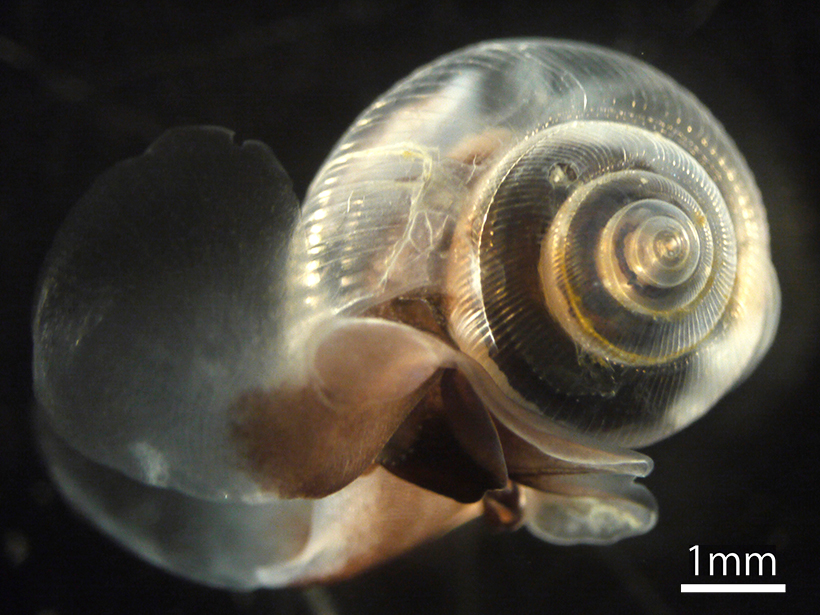Source: Journal of Geophysical Research: Biogeosciences
As temperatures rise, sea ice melts, and the ocean’s chemistry undergoes significant changes in pH and salinity, predicting the downstream ecological effects is challenging, particularly in areas like the Arctic, where change is occurring quickly. Scientists often turn to planktonic species to glean insights into ecosystem health. These keystone species constitute the basis of the food web in the region and are especially sensitive to changes in the water.
In a new study, Ofstad et al. collected plankton samples in the spring and summer of 2016 from the Barents Sea, located north of Scandinavia and western Russia. The researchers focused on the Bjørnøyrenna crater area, which contains several methane seeps that release gas into the water, to survey how concentrations and species diversity of planktonic foraminifera (forams), as well as of the planktonic sea snail Limacina helicina, vary over time and in the presence of methane.
The results showed a clear seasonal signal, with populations of both living planktonic forams and Limacina helicina growing by an order of magnitude or more and increasing in size as spring progressed to summer. In summer, the foram community is more diverse, with the added presence of subtropical species.
To understand how methane in the water column might affect the forams—through their consumption of carbon from methanotrophic bacteria, for example—the scientists looked at isotopic ratios of carbon and oxygen in the organisms’ rigid calcium carbonate shells. Surprisingly, they found no evidence that the elevated methane levels in the water had a direct impact on the animals. That’s not to say the seeping methane has no effect at all: The researchers hypothesize that it could enhance primary production in the water column indirectly by, for example, carrying nutrients toward the ocean surface or increasing carbon dioxide levels in the water. Such fertilizing could have an effect on a regional scale, potentially drawing in increased numbers of other organisms—a topic that the team concludes should be studied in the future. (Journal of Geophysical Research: Biogeosciences, https://doi.org/10.1029/2019JG005387, 2020)
—David Shultz, Science Writer
Citation:
Shultz, D. (2020), Arctic plankton populations vary by season, Eos, 101, https://doi.org/10.1029/2020EO143542. Published on 05 May 2020.
Text © 2020. AGU. CC BY-NC-ND 3.0
Except where otherwise noted, images are subject to copyright. Any reuse without express permission from the copyright owner is prohibited.

